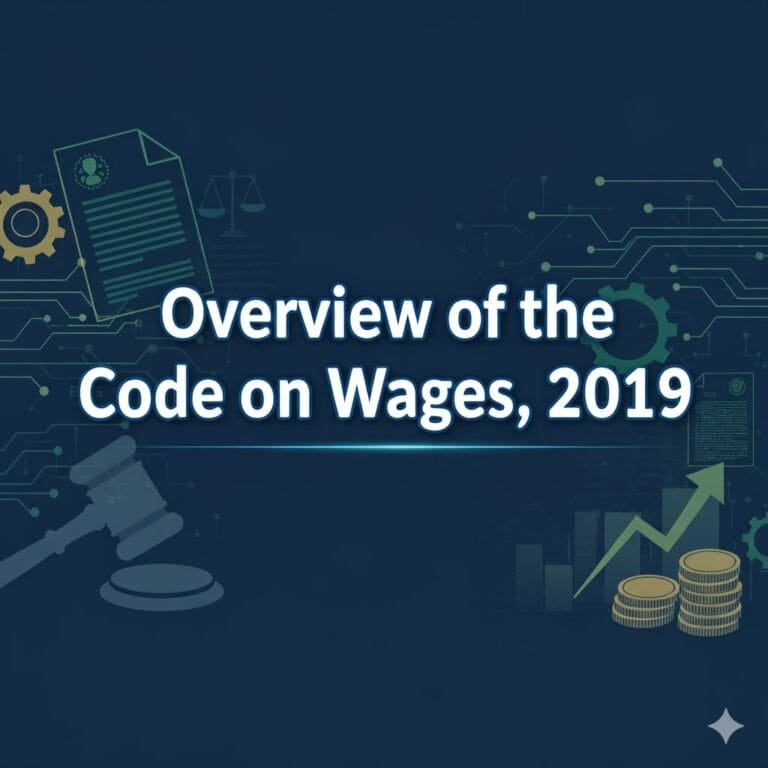
Background and Objective
The Code on Wages, 2019 (hereinafter referred to as “the Code”) was enacted by the Parliament of India to consolidate and simplify the existing labour laws. The Code seeks to subsume and rationalize the following four central labour enactments:
The primary objective of the Code is to ensure uniformity in definitions, facilitate ease of compliance, remove multiplicity of authorities, and guarantee a minimum standard of wages and timely payment to all employees, irrespective of the wage ceiling or sector of employment.
Commencement and Extent
Applicability
The Code applies to all employees and employers across establishments in both the organized and unorganized sectors. Unlike the previous wage laws, the Code’s provisions are not limited to specific scheduled employments or wage thresholds.
Key Definitions
Employer includes:
Major Changes in the Provisions:
(a) Minimum Wages – [Chapter II, Sections 5–9]
(b) Payment of Wages – [Chapter III, Sections 15–25]
(c) Equal Remuneration – [Section 3]
(d) Payment of Bonus – [Sections 26–41]
(e) Advisory Boards- [Section 42]
(a) representing employers;
(b) representing employees which shall be equal in number of the members specified in clause (a);
(c) independent persons, not exceeding one-third of the total members of the Board; and
(d) five representatives of such State Governments as may be nominated by the Central Government.
(a) in fixation or revision of minimum wages and other connected matters;
(b) for the purpose of providing increasing employment opportunities for women;
(c) with regard to the extent to which women may be employed in such establishments or employments as the aState Government may, by notification, specify in this behalf; and
(d) in any other matter relating to this Code, which the State Government may refer from time to time to the Board
(f) Inspector-cum-Facilitators – [Chapter IV, Section 51]
(g) Claims – [Sections 45–54]
The maximum penalty shall be limited to imprisonment up to 3 months and fine up to 1.00.000
Rule-Making Powers
Both the Central Government and the State Governments have powers to frame rules under the Code to give effect to its provisions.
The Code on Wages (Central) Rules, 2020 were published in draft, laying down procedures for:
Penalties & Punishments
Conclusion
The Code on Wages, 2019 is a landmark reform in India’s labour legislation, aimed at simplifying the wage structure, ensuring fairness, and providing a unified regulatory framework. It expands the scope of wage protection to all workers, fosters equality in remuneration, and modernizes the inspection and compliance mechanism through digitization.
The implementation is contingent on the Central Government’s notification bringing the Code into effect. Employers and HR compliance officers should align payroll systems and employment policies with the provisions of the Code to ensure readiness for immediate compliance upon notification.
Disclaimer: The information contained in this Article is intended solely for personal non-commercial use of the user who accepts full responsibility of its use. The information in the article is general in nature and should not be considered to be legal, tax, accounting, consulting or any other professional advice. We make no representation or warranty of any kind, express or implied regarding the accuracy, adequacy, reliability or completeness of any information on our page/article.